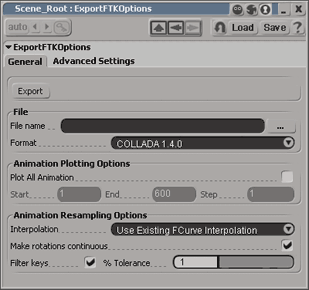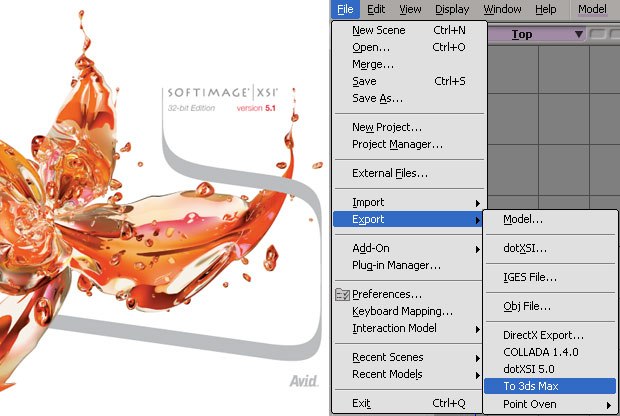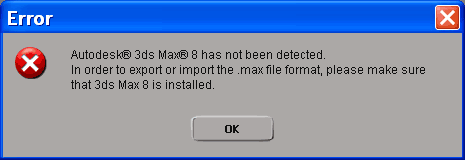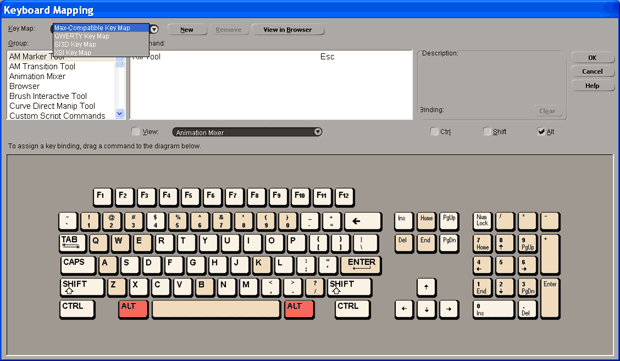Mary Ann Skweres looks into an essential part of the animation production process sound.
Softimage has just released a new version of SOFTIMAGE | XSI 5.1. This upgrade is available to everyone who is already running XSI 5.0. It doesnt even require a new license. This is one of the best dot release/free upgrades Softimage has put out yet. Judging from the types of tools included, its really obvious that Softimage is making an effort to ease the transition to XSI for users of other software, since one of the most important aspects of this release is the huge amount of new import/export tools.
Point Oven
Take Point Oven, for example. Point Oven is a baking system allowing the users of XSI, LightWave, Messiah, Maya and 3ds Max to interchange animation data. This all sounds very interesting, but how does it work?
Point Oven is a suite of plug-ins available from within XSI that allows you to simplify your XSI scenes by baking in vertex and function curve data, and streamline your pipelines by providing data transfer between different applications that also use Point Oven. It does this by taking the position of every vertex at every frame for your geometry and storing it in a file called MDD (Motion Designer Displacement). But, it goes even further. You can also export other types of files using Point Oven: LightWave objects (LWO2) LightWave scenes (LWS) and Messiah scenes (FXS).
For many jobs, Point Oven might even be better than writing out other programs native file formats. For example, with baked data, the user knows that the animation will be translated perfectly into the receiving application. But if XSI tries to export the entire file, including all the elements used to rig the animation, theres bound to be some function that the receiving application wont support, making the export useless.
Point Oven is more than just an import/export tool. It can be used as a point caching system. For example, in very large scenes containing lots of rigged characters, baking the animation to a single object and throwing away the rigs can increase performance dramatically.
3ds Max Import/Export
The import/export options dont stop with Point Oven. XSI 5.1 includes a great 3ds Max import/export tool. There is a catch, though: you need 3ds Max 8 installed in order to use this tool. Why? Because the conversion is accomplished using plug-ins for 3ds Max that XSI launches in the background. Dont think that Softimage is the only program on the planet that has to do it this way. Every other application that can import/export .max files (3dExploration, Polytrans, etc.) needs 3ds Max installed as well. The reason is because the only program that can read and write .max files is 3ds Max. All the framework needed to build or pack a 3ds Max scene is located in the core of the 3ds Max application. Think you have to go out and buy a full version of Max 8 just to export/import max files? You dont, you can get free 30-day trial of Max 8 at Autodesks website. The 3ds Max import/export tool supports quite a lot of features. For example: Standard and extended primitives. Envelopes, implicits and control objects. As nulls: lights, cameras, targets and nulls all with SRT animation. As polygons: Patch, NURBS, architectural primitives, splines and extended splines.

Collada Support
XSI 5.1 can now import and export Collada files. Collada stands for COLLAborative Design Activity. It is an open standard for the interactive entertainment industry that defines an XML-based schema for 3D authoring applications to freely exchange digital assets without loss of information. This enables multiple software packages to be combined into extremely powerful tool chains (such as XSI, Maya and 3ds Max). COLLADA supports programmable shaders authored and packaged using OpenGL ES Shading Language so that leading 3D authoring tools can work effectively together to create OpenGL ES applications and assets.
DDS Support
XSI 5.1 has a new function that can read .DDS files. DDS stands for DirectDraw Surface. It is a file format created by Microsoft that is used to store textures and cubic environment maps, both with and without mipmap levels. This format can store uncompressed and compressed pixel formats, and is the preferred file format for storing DXTn compressed data. This file format is supported by the Microsofts DirectX Texture tool (DirectX Texture Editor) and by the D3DX library. The only type of .DDS file that XSI does not currently support is floating .DDS files.
3ds Max-Compatible Keyboard Map
There is a new Max-compatible key map in XSI 5.1. Its not a full interaction model like the XSI or QWERTY (Maya) keymaps, but it can be used in conjunction with any interaction model, making switching between XSI and 3ds Max a breeze for most Max users.
Gator, Now for 3ds Max!
What is Gator and why should 3ds Max users be happy about it? Gator is used for transferring attributes between objects (based on the closet pointsurface of one objects over another). It is very easy to use: simply align two objects, select one and launch picking session. With this tool, you can copy any shape animation onto another geometric object without worries about having the same amount of polygons. It can also transfer UVs, materials, textures, clusters and envelope weights from any number of poly or NURBS meshes to any other poly or NURBS meshes. It can mirror properties during transfer and does discontinuity preservation. Gator is built into XSI, and included with the install is a Gator plug-in for 3ds Max. Writing a plug-in for 3ds Max may seem like a strange move by Softimage, but if it makes using XSI, together with 3ds Max and Softimage| Face Robot easier, then it looks like a very smart move on their part.
Expanded Reatime Shader Support
The new CgFX 1.4 realtime shader provides support for NVIDIAs CgFX file format, Microsofts FX file format and Colladas FX file format with the Cg profile. CgFX and FX files can be dragged and dropped onto objects and clusters and automatically generate property pages based on their content. The shader supports external file referencing as well as inlined code compilation for rapid prototyping. XSI also supports a more complete subset of Microsofts DX SAS 0.8x and 1.0 at the SDK level. As a result, DXHLSLProgram, CgProgram, CgFX and FX also benefit from it.
Rendering Options
There are new rasterizer sampling options in XSI 5.1.The Rasterizer is mental rays scanline rendering algorithm for accelerating motion blur rendering. It replaces the Rapid Motion scanline algorithm from previous mental ray releases. There are two new sampling options for the Rasterizer: Shading Samples and Motion Samples; also, the Collect Rate option has been renamed to Pixel Samples. (Pixel Samples controls the number of samples used per pixel to draw the subdivided triangles.)
Shading samples does much the same thing that the Shading Rate options in RenderMan do. In other words, it dictates how finely the objects are tessellated. The Shading Rate value controls how many pixels a triangle will cover. For example: Setting it to one will generate one triangle per pixel, setting it to two will generate two triangles per pixel and setting it to .5 will force a triangle to cover 2 pixels. Motion Samples option controls the number of times the shading sample is run across a triangle during a single frame of animation.

Hair
There are some new hair instancing options in XSI 5.1, which speed up working with and generally make your life easier when using XSI hair. You can now replace the guide hairs with instances, control how they are assigned via a random or weight map option and set their orientation using Tangent Map or Follow Object settings.
Shrinkwrap
The shrinkwrap deformation projects a wrapper object onto the surface of a target object. You can completely engulf the target, thereby giving the wrapper the same overall shape, or you can apply the wrapper onto the target like a decal. There are some new options for the Shrinkwrap: The Closest Surface If No Intersection option uses the Closest Surface projection method for points that do not hit the target object when using the selected projection. This ensures that all points of the wrapper object are deformed to the target. When shrinkwrapping along an axis, you can now choose the reference: Target object, Deformed object or Global.
Simple Workflow Enhancements
Sometimes its the simple things that make the day go by faster. XSI 5.1 has quite a few of these sorts of enhancements too. The isolate selection tool is now a toggle rather than a set of two options. This makes isolation one middle click away rather than a choice that you have to dig through the interface to find. Normally the order that objects are listed in the explorer is determined by the general sort order set in the explorer; for example, Alphabetical, None (creation) and so on. There has been a reorder tool for quite some time, but until now its scope was pretty limited. The new reorder tool has been expanded to cover objects in a group, passes, layers and clusters in a cluster container, making scene organization even easier than before. The script editor has a new autofocus tool. It controls the script editors rude and annoying habit of popping to the front of other windows as soon as the mouse pointer moves over it. The grid plane is now adjustable. Rather than being permanently laid out flat on the XZ axis, it can now be adjusted to match any axis pair. There is a new option in the XSI compositor (called Move Image Back To (0, 0) Coordinate) that makes cropping images much easier and new Resize node that works much better than the old one. A variety of new anchor points have been added for placing custom items on the XSI menus. You can now add items to the menus in the main command panel as well as the menus in the viewports. XSI now supports self-installing custom operators. There is a wizard that can generate a template for the appropriate callbacks, which you can access from the Plug-in Manager, and custom shaders no longer need to be registered. You can now store an objects keyable parameters, which are the parameters that are displayed in the keying panel. Keyable parameters let you keep a specific set of parameters always available for an object, without needing to mark them first. Last, but certainly not least, full support for Softimages new facial animation software, Face Robot, has been added to this version.
Bug Fixes
Of course, no release would be complete without a load of bug fixes. Rather than go into that here, you can find a list of them at the Softimage site.
As you can see, there are quite a lot of new features in this release, considering its only an upgrade to 5.1 from 5.0. If this is what Softimage offers in a .1 release, imagine what the next full upgrade will include.
Ed Harriss is a 3D artist/technical director, working at Alternate Route Studios, North Carolina. He is a Softimage expert and very well known in the community for his Softimage Learning Tools and his book How to Get a Job in CG. Ed is also writing for several online and print magazines and he is forum moderator on XSI Base.com.














